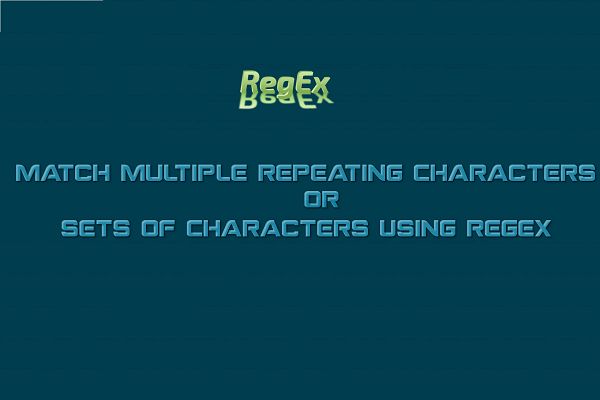Matching Literal Text
Ben is a regular expression. Because it is plain text, it may not look like a
regular expression, but it is.
So, here goes:
TEXT
Hello, my name is Ben.
REGEX
Ben
RESULT
Hello, my name is Ben.
How Many Matches?
The default behavior of most regular expression engines is to return just the first match. If we want to return all matches than we can use g (global) flag.
Handling Case Sensitivity
Regular expressions are case sensitive, so Ben will not match ben. However, most regex implementations also support matches that are not case sensitive. JavaScript users, for example, can specify the optional i flag to force a search that is not case sensitive.
Matching Any Characters
The regular expressions thus far have matched static text only—rather anticlimactic,indeed. Next we’ll look at matching unknowncharacters. The . character (period,or full stop) matches any one character.
Here is an example:
TEXT
sales1.xls
orders3.xls
sales2.xls
sales3.xls
apac1.xls
europe2.xls
na1.xls
na2.xls
sa1.xls
REGEX
sales.
RESULT
sales1.xls
orders3.xls
sales2.xls
sales3.xls
apac1.xls
europe2.xls
na1.xls
na2.xls
sa1.xls
so . is used to match any character.
If we want to get two or more characters then we can use that number of dots or periods.
For example
Text
Rat.he
Ratt.he
Rattt.he
Rattee.he
Regex
Rat..
Result
Rat.he
Ratt.he
Rattt.he
Rattee.he
Also if want to exactly match . then we can use \ (escape charaters) to define it.
For Example
Text
Rat.he
Ratt.he
Rattt.he
Rattee.he
Regex
Rat.\.
Result
Rat.he
Ratt.he
Rattt.he
Rattee.he
Summary
Regular expressions,also called patterns, are strings made up of characters. These characters may be literal (actual text) or metacharacters (special characters with special meanings), and you learned how to match a single character using both literal text and metacharacters. . matches any character. \ is used to escape characters and to start special character sequences.


